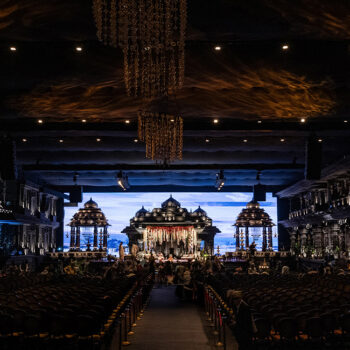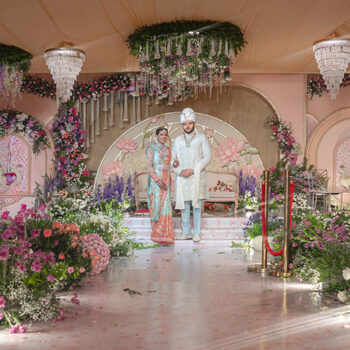This entry was posted
on Thursday, June 9th, 2016 at 5:10:48 pm and is filed under Wedding Planning, WeddingSutra Engage, Wedding Summit & Masterclass.
You can follow any responses to this entry through the RSS 2.0 feed.
Both comments and pings are currently closed.
Culture, celebration and cuisine – Chef Himanshu of JW Marriott brings it all together
Wedding Planning, WeddingSutra Engage, Wedding Summit & Masterclass - Jun 9, 2016
It may be a wedding, but as George Bernard Shaw said, “There is no sincerer love, than the love of food.”
JW Marriott Juhu’s Chef Himanshu took our brides on a detour from the aisle, down the other important walkway –the buffet tables – to discuss wedding cuisine trends and menu planning at our popular WeddingSutra Masterclass.
Around the world, food is linked to celebration. Our histories, our ethnicities, our piety, gratitude, love… everything can be expressed with the care taken in a traditional preparation or the effort put in to create an avant garde recipe. So it is no wonder that cuisine is usually the most debated, discussed and carefully planned element of an Indian wedding.
At the WeddingSutra Masterclass, Chef Himanshu came on board to sort the deck. His approach is refreshingly pragmatic. While he has a penchant for experimentation with ingredients and technique to mind-blowing results, he starts with two gentle suggestions. First, don’t fall for gimmicks or blindly follow a trend; what works for someone else may not work for you. Second, don’t subject your guests to yourfavourite cuisine. It may be your day, but you want your guests to enjoy the food and fondly remember the wedding. Sit back, relax and “Let the chef choose the menu in keeping with your concept and décor. He is most skilled to keep your guests happy!”

Chef Himanshu says most young Indian couples prefer international cuisine but reminds us that it may leave the elders in the family a little cold. Yet, sticking to a completely traditional menu may seem like a bore to the couple’s friends. With several of these conundrums under his belt, he presents the ideal solution:
“Please the elders with traditional dishes at the pheras and the reception and go with trending international cuisines at the roka, haldi, mehndi and sangeet.”

He also warns against the temptation of the lavish spread across several cuisines! For one thing, too many disparate cuisines can lead to wastage and may not always complement each other. “Less is more,” he keeps intoning, “and plan intelligently because guests can only eat that much. If a menu is well planned, and all the right combinations are in place, guests are more likely to enjoy what is served.”

There are also the subtleties and details that go far in enhancing the culinary ambience. Chef Himanshu offered some simple, clever ideas: flavoured water, cold-pressed juices, dark chocolate and savoury chocolate. He also recommends exploring local produce at destination weddings to create piques of interest at the table like Goji berries or South African teff grains (instead of the overdone quinoa). Don’t forget to present sauté veggies or a separate stall for salads for the health conscious, if possible. Another easy, inexpensive option at a destination wedding is to have a live ice cream station. Get in touch directly with a gelato brand to set it up at the venue.
The chef’s passion for food and his experience and ideas visibly inspires the participants. A question from the audience about the viability of the molecular food trend at a wedding is met with a humourous explanation about how it is the epitome of the gimmick, a play with texture, presenting food using chemicals and dry ice. A bride wants to know how to enhance the vegetarian menu at her Maharashtrian wedding. “Play with the ‘Mumbai Local’ theme,” quips the chef, suggesting innovative ways to style the earthy bhakri, sabudana vada and amboli. “Always have a pickle and papad stall,” he says to agreement from the audience, “for people who may need extra spice and also a chance for people to explore a little. There’s a variety that each state offers. It works at all Indian weddings.”

Another question pops up. A Punjabi bride is marrying into a Marwari family in a three-day ceremony. How can the couple please both families? Chef Himanshu is quick with a solution. “Breakfast can be South Indian, it has universal appeal. In one corner, offer a regular European breakfast. The next day, have separate thepla and paratha corners. On the wedding day, stick to vegetarian and please the elders. You can choose non-vegetarian starters during the mehndi and sangeet celebrations. Also, serve alcohol and non-vegetarian dishes in a separate space.” The participants applaud, the bride is ecstatic!
You can rely on the chef to know that the way to everyone’s heart is through their tummies!






